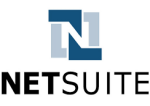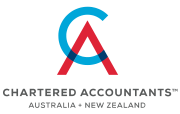Christmas and tax
With the festive season fast approaching, business owners will be turning their mind to year-end celebrations with both employees and clients.
Knowing the rules around Fringe Benefits Tax (FBT), GST credits and what is or isn’t tax deductible can help keep tax costs to a minimum.
Holiday celebrations generally take the form of Christmas parties and/or gift giving.
PARTIES
Where a party is held during a working day, on business premises, attended by current employees only and costs less than $300 a head (GST-inclusive), FBT does not apply. However, the cost of the function will not be tax deductible and GST credits cannot be claimed.
Where the function is held off business premises, say at a restaurant, or is also attended by employees’ partners, FBT applies where the GST-inclusive cost per head comes to $300 or more, the costs are tax deductible and GST credits are available.
However, FBT will not apply where the per person cost is below the $300 threshold if it can reasonably be regarded as an exempt minor benefit – ie, one that is only provided irregularly and infrequently. Where FBT does not apply because of the minor benefit rule, the cost will not be deductible and GST credits will not be available.
Where clients also attend, FBT will not apply to the cost applicable to them, but those costs will not be tax deductible and GST credits will not be available.
Where there is a mix of attendees, you may need to keep track of who participated in the function.
GIFTS
First, you need to work out whether the gift itself is in the nature of entertainment – for example, movie or theatre tickets, admission to sporting events, holiday travel or accommodation vouchers.
Where the recipient of an entertainment gift is an employee (or an associate of an employee) and the GST-inclusive cost is below $300, the minor benefit exemption should apply so that FBT is not payable, in which case the cost will not be tax deductible and GST credits are not claimable. For larger entertainment gifts to employees, however, FBT applies, the cost is
deductible and GST credits can be claimed.
Where the gift is not in the nature of entertainment and it falls below $300, the FBT minor benefit exemption should apply – for example, Christmas hampers, bottles of alcohol, pen sets, gift vouchers.
But because the entertainment rules don’t apply, the cost of the gift is tax deductible and GST credits are claimable.
Where a gift is made to a client, the $300 FBT minor benefit exemption falls by the wayside, but as long as it is not an entertainment gift and it was made in the reasonable expectation of creating goodwill and boosting future business it should be deductible to the business. GST credits are also claimable, while the amount is uncapped (within reason).
BEST APPROACH FOR EMPLOYEES
Provided partying is not a regular thing in your business, taking employees out for Christmas lunch escapes the FBT net, as long as the cost per head stays below the $300 threshold. While the cost of the function will be non-deductible, and no GST credits are available, that generally has less of a cash-flow impact on the business than the grossed-up FBT amounts.
For employees and their associates, non-entertainment gifts under $300 are a good way to go.
Making a non-entertainment gift costing up to $299 is a very tax effective way of showing your appreciation.
And because the $300 cap applies separately to each benefit, depending on how generous you feel, you could also make a gift costing up to $299 to the partner or spouse of an employee, which effectively doubles the $300 minor benefits cap.
Where the cost of a non-entertainment gift costing up to $299 is not subject to FBT, it will be tax deductible, with an entitlement to GST credits, giving you the best of both worlds.
BEST APPROACH FOR CLIENTS
While FBT is off the table for business clients, making a non-entertainment gift (tax deductible; no dollar limit within reason) is actually much more tax effective than wining and dining a key client (non-deductible entertainment). If you put some thought into what gift to buy a client and perhaps deliver it yourself, you might make much more of an impact than inviting them to share a restaurant meal in their already crowded Christmas calendar.
If you’re not sure and you need help in sorting out the tax treatment of your upcoming holiday celebrations and gifting, don’t hesitate to give us a call.
Reducing your tax bill while topping up your super
Let’s say you’ve just sold the house you inherited from your parents 12 years ago for $1.3 million.
You’ve been renting it out for most of that time, but the property market has been hotting up and you were told by several real estate agents that they could get youa good price. But what about the tax consequences?
At age 50, you’re still working (salary of $120,000 per annum), having returned to the workforce in July 2023 following a five year absence for personal reasons. You don’t expect to retire from paid employment until age 65 at the earliest. Your total super balance on 30 June 2025 was $300,000, sitting in a retail fund.
Your accountant has calculated the net capital gain on selling Mum’s house as $600,000. After applying the 50% CGT discount, this results in a taxable income of $420,000, and a whopping tax bill of $163,538 to go with it. Can anything be done?
Depending on your superannuation history, there may be a legitimate way of taking a big chunk out of that tax bill while topping up your super at the same time.
Concessional super contributions are subject to an annual cap, which is set at $30,000 for the 2025-26 income year. That figure is well above the mandatory employer super guarantee amount for most income levels. Many people don’t go close to using up their concessional contribution caps, which can leave them with carry-forward concessional contributions.
To help people with modest total super balances (below $500,000 on the previous 30 June), the government gives them the option of using some or all of their previously unused concessional contributions cap on a rolling basis for five years – ie, the five previous income years from 2020-21 to 2024-25, plus the current year (2025-26).
Conveniently, the ATO keeps track of your carry-forward concessional contributions balance, which you can look up on myGov.
The beauty of this arrangement is that you can use your catch-up concessional contributions to make personal deductible contributions, which can offset part of the CGT gain from the sale of the inherited property. Instead of being taxed at the top marginal rate of 47%, the amount of the catch-up contribution is taxed at the normal rate of 15% in your super fund, which creates a net saving of 32% on the contributed amount.
It is not unusual for someone to have carry-forward concessional contributions in excess of $100,000, which would take your taxable income down to $320,000, with tax payable of $116,538, or $47,000 less than what your tax bill would be without making the tax deductible catch-up contribution. That tax saving has to be reduced by $15,000 in contributions tax payable by your super fund, for a net saving of $32,000.
Remember, however, that any super contributions you make at age 50 will not be accessible until you reach preservation age (60 if retired or 65 if you’re still working).
If you have other plans for that $100,000 (and you did pocket $1.3 million on the house sale) you will need to weigh up your options. But locking up a small part of the house proceeds seems like a small price to pay for a $32,000 tax saving.
On the other hand, if you have an appetite for putting even more money into your super, you might want to consider also making a non-concessional contribution of up to $360,000. This is not tax deductible and there is no 15% contributions tax when paid into your fund.
That covers the tax side of things but since you have received a life-changing windfall, you should consider getting advice from a licensed financial adviser.
If you find yourself in this situation, come in and see us well before 30 June 2026. If you decide to go ahead with making a catch-up contribution the super fund has to be notified, which we can help you with.
Division 296 tax revisited
Big news for anyone with a large super balance – the government has gone back to the drawing board on the controversial Division 296 tax, and the changes are a big step toward fairness and common sense.
A quick recap
When the Division 296 tax was first announced in 2023, it caused an uproar. The main problem? It would have taxed unrealised gains, that is, paper profits you haven’t actually made yet and set a $3 million threshold that wasn’t indexed meaning it wouldn’t rise with inflation.
After a wave of feedback from the industry, the government has listened. The Treasurer’s new announcement, made in October 2025, fixes some of the biggest issues. The revamped version is designed to be fairer, simpler, and more in line with how tax usually works.
The plan is to start the new system from 1 July 2026, with the first tax bills expected in 2027–28.
What’s changing
Here’s what’s new under the revised Division 296 tax:
» Only real earnings will be taxed. No more tax on unrealised gains as you’ll only pay on earnings you’ve actually made.
» Super funds will work out members’ real earnings and report this to the ATO.
» The $3 million threshold will be indexed to inflation in $150,000 increments, keeping pace with rising costs.
» A new $10 million threshold will be introduced. Earnings above that will be taxed at a higher rate of 40%, and that threshold will also rise with inflation.
» The start date is pushed back to 1 July 2026, giving everyone more time to prepare.
» Defined benefit pensions are included, so all types of super funds are treated the same.
So what does this mean in practice? Think of it as a tiered tax system:
» Up to $3 million – normal super tax of 15%.
» Between $3 million and $10 million – taxed at 30%.
» Over $10 million – taxed at 40%.
Basically, the more you have in super, the higher the tax rate on your earnings above those thresholds.
How it will work
Super funds will continue reporting members’ balances to the ATO, which will figure out who’s over the $3 million mark. If you are, your fund will tell the ATO your actual earnings (not paper gains). The ATO will then calculate how much extra tax you owe.
We don’t yet have the fine print on what exactly counts as “realised earnings,” but it’s likely to mean profits you’ve actually made, similar to how taxable income is treated now.
What’s still up in the air
While these updates make the system much fairer, there are still a few unanswered questions:
» What exactly counts as “earnings”? Will it only include profits made after 1 July 2026, or could older gains that are sold later be included too?
» What happens with capital gains? Super funds usually get a one-third discount on capital gains for assets held over a year, but it’s unclear whether that will still apply.
» How will pension-phase income be handled? Some super income is tax-free when you’re in the pension phase, and we don’t yet know how that will interact with the new rules.
» Can people with over $10 million move money out? If your earnings above $10 million are taxed at 40%, you might want to shift funds elsewhere but the government hasn’t said if that’ll be allowed.
What it means for you
If your super balance is over $10 million, the proposed rules mean that a portion of your superannuation earnings could attract a higher tax rate of up to 40%.
For people with between $3 million and $10 million, the new system could also change how much tax applies to their super earnings, depending on how the final legislation defines “realised gains.”
But don’t rush. These rules aren’t law yet, and if you take your super out, it’s hard to put it back because of contribution limits.
It’s best to wait for the final legislation and get professional advice before making any decision to withdraw benefits from super.
Home Equity Access Scheme: What you need to know
For many older Australians, having wealth tied up in the family home can make day-to-day expenses challenging. The Home
Equity Access Scheme (HEAS) is a government-backed program that allows eligible seniors to unlock some of the value in their home without selling it.
WHAT IS HEAS?
HEAS is essentially a reverse mortgage run by the Australian Government. If you are of age pension age and own real estate in Australia, you can apply for regular loan payments from the government. These payments come in either fortnightly instalments or up to two lump sums per year.
It’s designed to help retirees who may not qualify for a full pension or who need extra income. The loan is secured against your property and is not considered taxable income. You don’t need to make repayments while you’re alive, though interest does accumulate.
WHO CAN APPLY?
You may be eligible if:
» You are age pension age.
» You or your partner own real estate in Australia.
» You receive a part or no pension, or would qualify if not for the assets or income test.
» You’re not bankrupt and your property is properly insured.
Even self-funded retirees can access this scheme, as long as they meet the age and property requirements.
HOW MUCH CAN YOU BORROW?
You can receive:
» Fortnightly payments up to 150% of the full age pension.
» Advance lump sums up to 50% of the annual age pension, taken once or split into two payments every 26 fortnights.
The total amount you can borrow depends on your age and the value of your home. The government uses a formula that includes an age-based component, so older applicants can usually borrow more.
You can also nominate an amount to exclude from your property value if you want to preserve equity and leave something for your family.
WHAT ABOUT INTEREST AND REPAYMENT?
The current interest rate is currently 3.95% per annum (compounding fortnightly). The loan does not need to be repaid until:
» You sell the property.
» You pass away.
» You choose to repay early.
When the loan ends, your estate or surviving partner will repay the debt. The scheme’s “No Negative Equity Guarantee” ensures that you’ll never owe more than your home is worth.
KEY BENEFITS
» No regular repayments required during your lifetime.
» You remain the owner of your home.
» Flexibility to adjust or stop payments.
» Peace of mind through the No Negative Equity Guarantee.
THINGS TO CONSIDER
Before applying, think about:
» How much of your home equity you’re willing to give up.
» The long-term impact on your estate and inheritance.
» Alternative options like downsizing or private loans.
» Making sure your property stays well maintained and insured.
FINAL WORD
HEAS can be a smart way to boost your retirement income while staying in your home. But it’s a long-term decision. If you would like to know more, give us a call so we can weigh your options carefully to make sure it suits your lifestyle and future plans.
Renting your holiday home
With summer just around the corner and beach holiday homes back on the agenda, perhaps it is time to revisit a few tax matters about their use. And the big issue is how you claim expenses if your holiday home is only rented for part of the year.
The ATO takes the view that you can claim expenses for the property based on the extent that they are incurred for the purpose of producing rental income, but you’ll need to apportion your expenses if your property is available for rent for only part of the year.
Moreover, it has to be genuinely available for rent! The ATO says that factors that may indicate a property isn’t genuinely available for rent include:
» It’s advertised in ways that limit its exposure to potential tenants; eg, the property is only advertised at your workplace or on restricted social media groups.
» The location, condition of the property, or accessibility of the property mean that it’s unlikely tenants will seek to rent it.
» You place unreasonable or stringent conditions on renting out the property that restrict the likelihood of securing renters; eg, setting the rent above the rate of comparable properties in the area, requiring prospective users to give references for short holiday stays and conditions like “no children” and “no pets”.
» You refuse to rent out the property to interested people without adequate reasons.
The ATO also requires you to apportion your expenses if you charge less than market rent to family or friends to use the property. And in this case, the general rule is that you can only claim expenses up to the amount of rent derived – so that you have a tax-neutral outcome.
Importantly, the ATO also says that it may not be appropriate to apportion all expenses on the same basis. For example, expenses that relate solely to the renting of your property are fully deductible and you don’t need to apportion them based on the time the property was rented out. Such expenses include real estate commissions and the costs of advertising for tenants.
And again, you can’t claim a deduction for expenses that relate to periods when the property is not genuinely available for rent or periods when the property is used for a private purpose or for the part of the property that isn’t rented out – eg, the cost of cleaning your holiday home after you, your family or friends have used the property for a holiday, or a repair for damage.
Oh, and finally just a word on selling the property.
If you have never lived in it as your home, then you will be subject to CGT if you sell it (unless you bought it before 20 September 1985). And this will be the case regardless of whether you only used it as a holiday home or you partly rented it as well.
Importantly, in calculating the capital gain you can include in its cost all the non-deductible costs of owning or holding the property such as mortgage interest, insurance, repairs, council rates, etc, – and even the cost of having the lawns regularly mown. However, you will need to have kept appropriate records of these expenses if you wish to use them.
And of course, you are entitled to the 50% CGT discount to reduce the amount of any assessable gain.
These then are some of the important factors you need to keep in mind about tax and holidays homes.
But there are a lot more things that you need to know. So, come have a chat to us if you want some help.
Using your home to produce income
In contrast to holiday homes, what happens where you use all or part of your home to produce assessable income? Well, there will be important capital gains tax (CGT) consequences – the most important of which is that you will be likely to lose some of your CGT exemption on the home. However, the rules about possible partial CGT exemptions on homes are quite complex and they will depend on how exactly you used your home to produce assessable income.
For example, in the simple case, if you vacated your home and rented it for a period of up to six years you can choose to use the “absence concession” to continue to treat it as your CGT-exempt home during this period of absence.
In other words, you won’t lose your CGT exemption at all in this case.
But there is one important proviso: during this period of absence no other home can qualify as your CGT-exempt home.
Nevertheless, applying this rule is not entirely straightforward. There are important considerations to bear in mind.
On the other hand, if you only use a part of your home to produce assessable income then you cannot use this absence rule and in most cases you will generate a partial CGT liability on your home. This will typically occur when for example you rent a room in the home, carry on a business from part of the home (eg, a professional practice) or construct a granny flat and rent it out.
But note that if you only rent part of the home to a friend or a relative and do not charge commercial rent, you will not trigger this rule about losing part of your CGT exemption as you have not used the home to produce assessable income.
Also note that because you have used part of your home to run a business, you may be eligible to apply the CGT small business concessions to reduce, eliminate, or roll over any capital gain arising from the business use of your home.
However, it is not as easy as it seems to qualify for these concessions – and our advice should be sought on any such matter.
There is also another important rule which is often overlooked when a home is first used to produce assessable income – and that is that the home will be considered to have been reacquired for its market value at that time. This will help reduce the amount of the assessable capital gain that is calculated.
And finally, the 50% CGT discount is available to reduce the amount of any assessable gain from using part of your home to produce any form of assessable income – as long as you have owned it for at least 12 months.
So if you have this type of CGT issue in relation to probably your most valuable asset, come speak to us first before selling your home.
Click to view Glance Consultants November 2025 Newsletter via PDF
Introducing Humello – The Smarter Way to Manage People, Pay & Performance
Running an SME means wearing many hats — but managing HR, pay, and compliance doesn’t have to be one of them.
Humello is an AI-powered HR platform designed for growing businesses. It helps you structure roles, align salaries, generate position descriptions, and analyse pay equity — all in one place. Whether you employ 10 or 500 people, Humello brings discipline, consistency, and data-driven insights to your HR operations — without the need for a full-time HR team.
We’re sharing Humello’s brochure because we believe it can add real value to your business — helping you save time, reduce risk, and make confident people decisions.
Click to view the Humello brochure




















